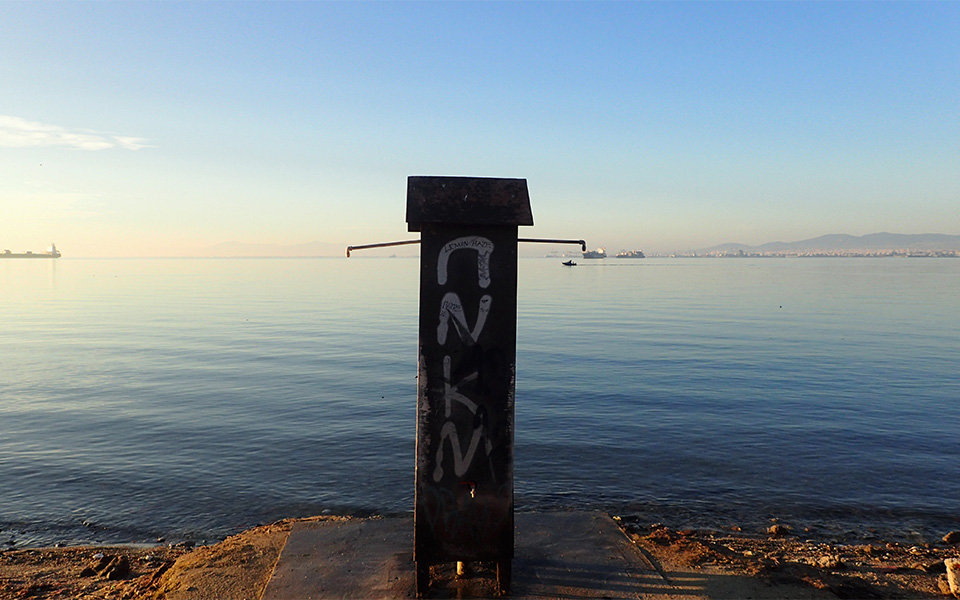There are a couple of beaches right here in the city. At least, technically speaking they’re beaches – narrow strips of ungroomed sand in the district of Kalamaria, at the edge of the Thermaic Gulf.
I had never considered them a viable option. But then the virus made everything look different: the waters off this urban area started to seem less scary than taking a crowded bus out to the suburban beaches.
So I suited up and walked over to “Deauville” – that’s the first one you reach, towards the east along the waterfront and not too far past the concert hall. Someone at the municipality must have an optimistic streak, or at least a sense of humor: Deauville (‘Ντοβίλ’) is little more than a narrow strip of sand, dry seaweed, and blue bottle caps stretched between two cafes.
There are six benches, a shower, and a much-coveted concrete block in the water at the beach’s edge. Beyond this, some graffiti-covered sheets of corrugated aluminum frame a treacherous little patio of broken cement. In all, a very unvarnished urban scene.
About the author
Based in Thessaloniki, Amber Charmei writes about culture, travel and lifestyle. You can find more of her work on her blog Provocolate.com
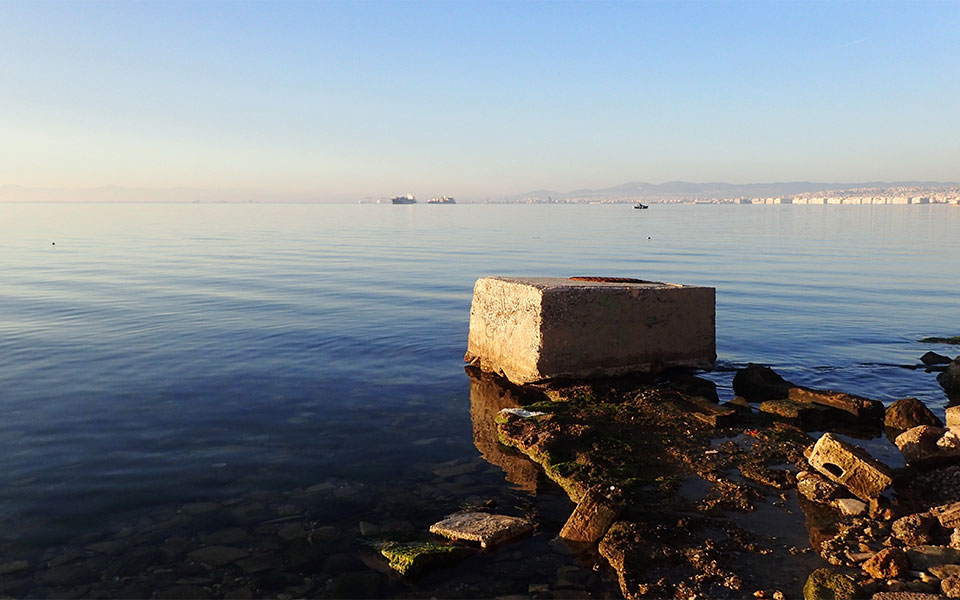
© Amber Charmei
And a crowded one, as it turned out. In the heat of July, there were many swimmers, drawn by the surprising clear, inviting waters.
The spot is frequented mostly – in fact nearly exclusively – by an older generation. All of them, I soon found, were enthusiastic, dedicated swimmers who rarely miss a day. A typical exchange, held far from shore under the pink skies of dusk: “What did you cook today?” – “I didn’t get around to it, and I couldn’t miss the swim. Maybe we’ll cut up a tomato.”
As dusk started falling earlier and earlier, they asked me if was planning on continuing with them. A core group of ten or fifteen swim straight on through the winter.
I have always been so impressed by those hearty young guys who dive for the cross on Epiphany. Suddenly, next to this group of intrepid seniors, they didn’t look so exceptionally tough. I asked the expected: how they can stand it?
“The secret is to never stop. Your body adjusts – every day, a little colder. Once you get used to the water, you don’t want to leave. It’s better than summer.”
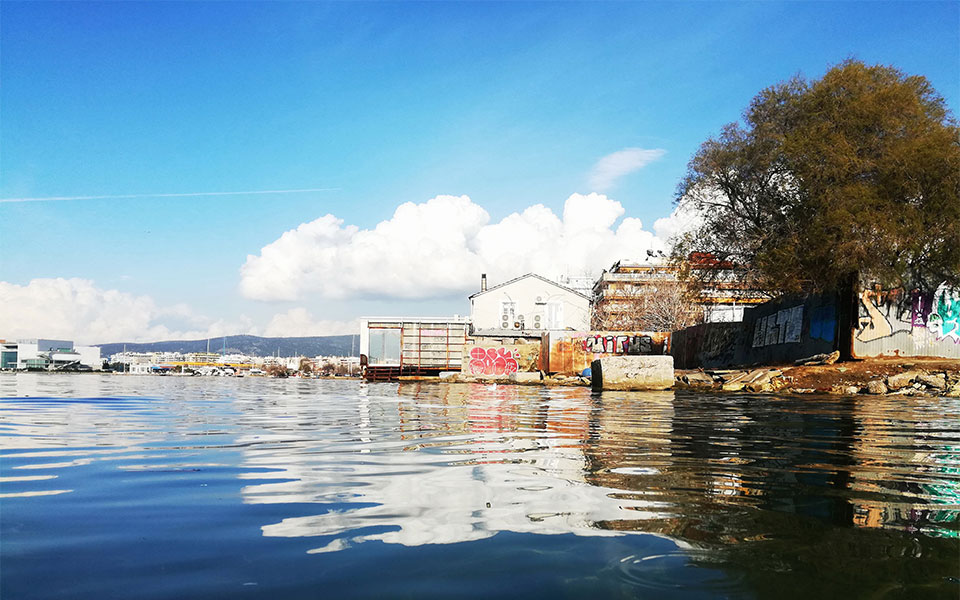
© Amber Charmei
Personally, I haven’t found that to be the case. No matter how gradually I prepared myself for them, January swims in the Thermaic Gulf were literally breathtakingly cold. February is colder still.
The deceptively gentle days may have melted some of the snows of Olympus, like a challenge from the gods. I gasp when I go in, walking straight in and then diving, giving determination no chance to waver.
Cold as they are, winter swims are also addictive.
Once the pain of the initial shock subsides, it’s some excellent swimming. After about 10 minutes, you start to feel significantly less cold, and maybe even mildly euphoric. It’s easy to stay in too long if that happens. You’ll know it’s been too long if the soles of your feet are so numb that you stumble when you’re getting out of the water.
How cold is cold? I used to check a website with sea temperatures before heading out. One day in December, it said 18.7. I was pleased with myself – braving waters below 20 degrees.
Some of the swimmers bring their own water thermometers for confirmation – more like affirmation, really. I was already far from shore when I heard a jubilant shout – “thirteen and half!” You feel a whole lot tougher with that -5 degree psychological gain. One man told me that he draws the line at 8 degrees C. Right now, we’re just barely still in the double digits, at 10.5.
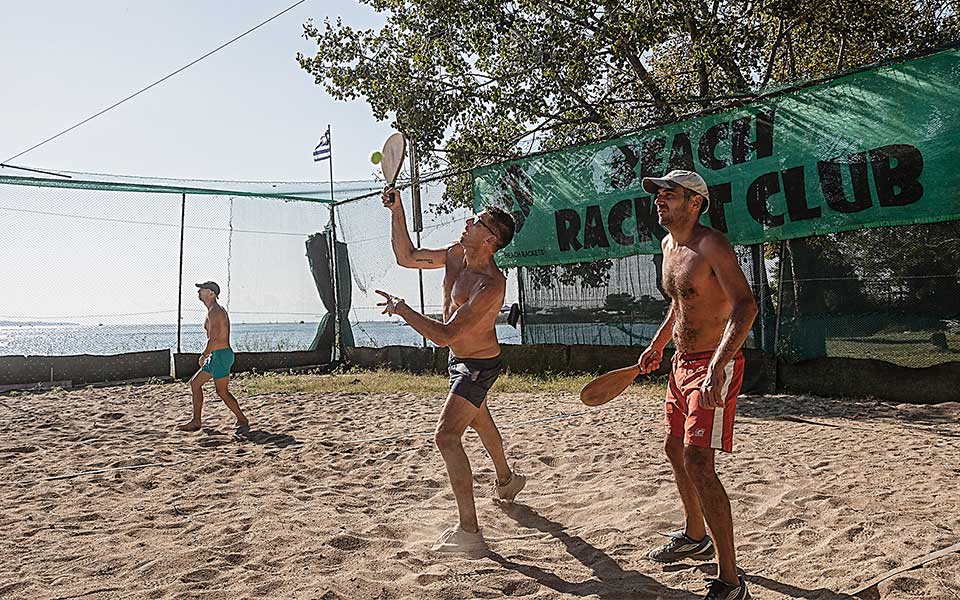
© Konstantinos Tsakalidis
Winter swims have turned out to be a powerful antidote to the confines of quarantine. A couple dozen meters from shore, you can enjoy the novelty of taking a deep breath without a mask. Much more than that though, it’s a place you can go; in an era so necessarily restrictive, the sea in winter represents a new territory to explore, offering a rare sense of freedom.
Stepping out of the water after braving the cold, tingling, breathless, and glowing with vitality, you feel invincible. It’s a powerful sensation during a pandemic. As the cold toughens the body, moments like that strengthen the soul.
Here, where the urban and the wild come together, is a whole new Thessaloniki experience. From inside the water, the view of the White Tower and the old seafront promenade catching the golden rays of the setting sun is mesmerizing. The container ships and tankers become familiar, and so do the sounds of the specific motorboats of the local fishermen. Sculls skim silently past, a coach following behind, urging the rowers on via megaphone.
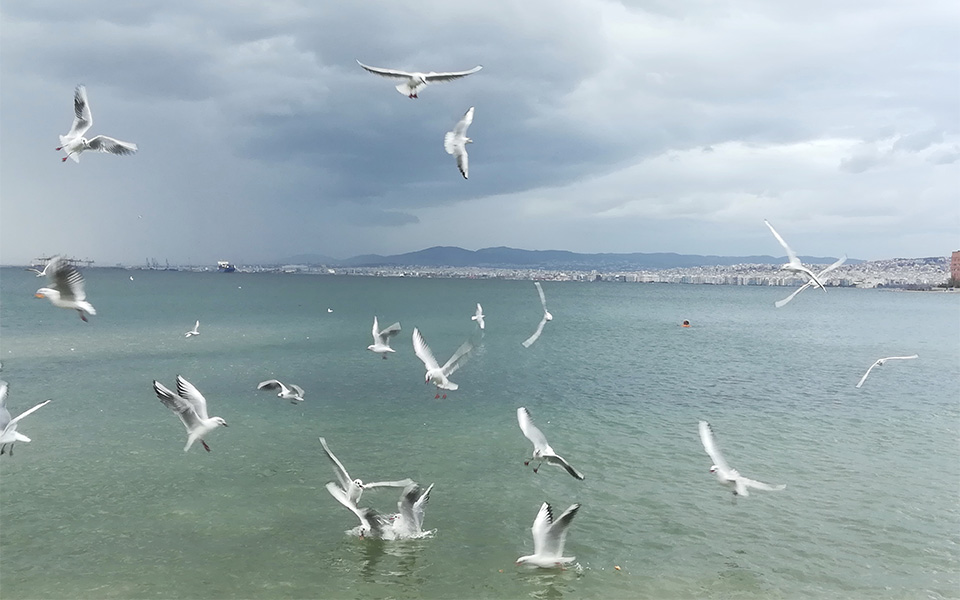
© Konstantinos Tsakalidis
Nature is the real star, of course. Summer has nothing on the skies of winter – the dramatic cloud formations, the lower angle of the sun. We’re just a few kilometers from the Axios Delta, a wetland preserve just across the bay.
The seabirds visit – in particular, a pair of pygmy cormorants. Those are the sleek black ones who dive under the surface for long enough to make you start to worry about them before they pop back up really far away. Two rusted metal beams sticking up out of the water serve as perches for them to spread their wings out to dry. I swim a silent breast stroke, and they don’t seem to mind my coming close to admire them. Eventually, they’ll spot some prey and take off, sailing thrillingly low right over my head.
Noisy flocks of seagulls, drawn by children waving crackers at them, also show up. This being a city, there are pigeons, too. They have a standing appointment with a man who comes by bike to feed them in the afternoons.
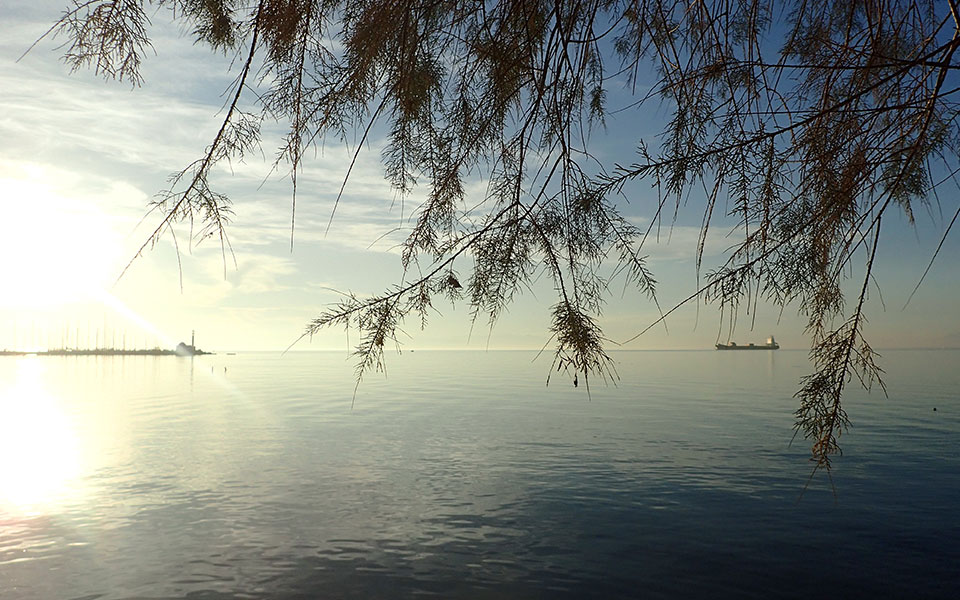
© Amber Charmei
There’s also plenty going on under the water’s surface. ”Kefalopoula” – flathead grey mullet, and schools of silvery sardines abound right here in the city – you’ll nearly always spot some.
Jellyfish are seasonal visitors. November was full of them. Swimmers warn one another when they spot the large purple ones – known to sting. There would always be a couple of them out there. The clear ones, about the size of a child’s fist, seem to pose no threat. But the sea was thick with them; you’d feel them with every stroke, an eerie sensation. And that expanse of broken cement by the shore? Crabs feel at home there among the cracks.
This being Greece, there’s even some archaeology. Past the marina, and then the reeds with all the ducks, there’s another rough little beach by a cliff, right before the old palace. Here, you can swim out to a buoy by the entrance to the marina (but no further, as boats are always coming and going). The buoy marks the spot where a section of the Byzantine city walls still lies, submerged. I knew this, but it slipped my mind and I cut myself on it.
Now it’s my favorite spot to swim out to and stand on, waist deep, watching the light change over the city’s seafront, far across the bay.
Based in Thessaloniki, Amber Charmei writes about culture, travel and lifestyle. You can find more of her work on her blog Provocolate.com

